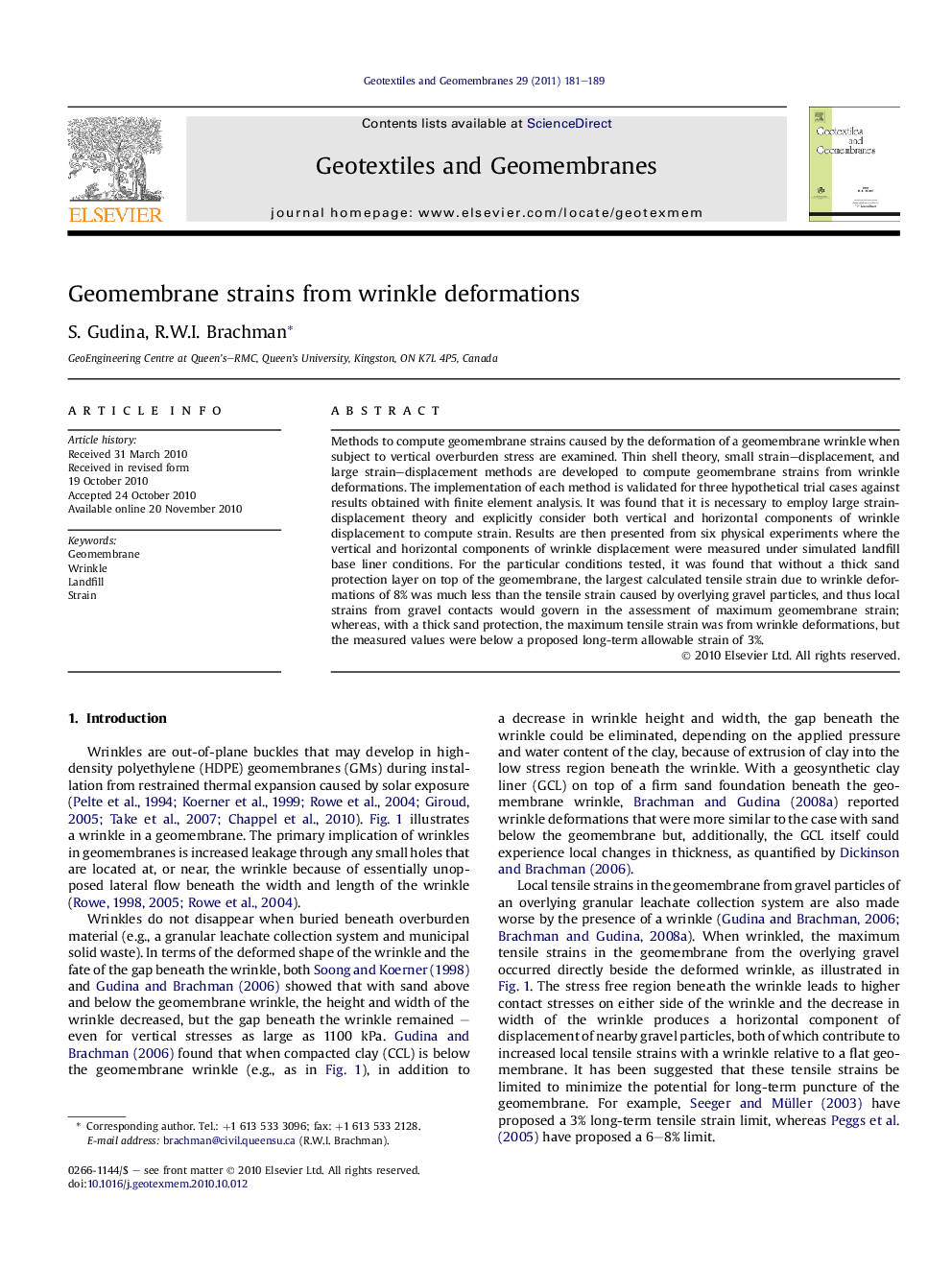| Article ID | Journal | Published Year | Pages | File Type |
|---|---|---|---|---|
| 274365 | Geotextiles and Geomembranes | 2011 | 9 Pages |
Methods to compute geomembrane strains caused by the deformation of a geomembrane wrinkle when subject to vertical overburden stress are examined. Thin shell theory, small strain–displacement, and large strain–displacement methods are developed to compute geomembrane strains from wrinkle deformations. The implementation of each method is validated for three hypothetical trial cases against results obtained with finite element analysis. It was found that it is necessary to employ large strain-displacement theory and explicitly consider both vertical and horizontal components of wrinkle displacement to compute strain. Results are then presented from six physical experiments where the vertical and horizontal components of wrinkle displacement were measured under simulated landfill base liner conditions. For the particular conditions tested, it was found that without a thick sand protection layer on top of the geomembrane, the largest calculated tensile strain due to wrinkle deformations of 8% was much less than the tensile strain caused by overlying gravel particles, and thus local strains from gravel contacts would govern in the assessment of maximum geomembrane strain; whereas, with a thick sand protection, the maximum tensile strain was from wrinkle deformations, but the measured values were below a proposed long-term allowable strain of 3%.
